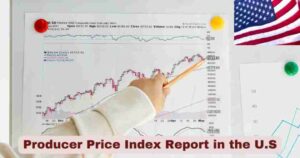Real Estate Sales in US 2025
The American real estate market continues to demonstrate resilience and adaptability as we navigate through 2025. Current market conditions reflect a complex interplay of economic factors, with existing home sales showing modest improvement while new home sales maintain steady momentum. The market is characterized by persistently elevated mortgage rates, which have created a unique environment where both buyers and sellers are recalibrating their expectations and strategies.
Market dynamics in 2025 reveal a tale of two segments: existing homes and new construction. While existing home sales reached 4.03 million units in May 2025, representing a slight uptick from previous months, new home sales have demonstrated more robust growth patterns. The median home price has shown remarkable stability at $440,910 nationally, with regional variations reflecting local economic conditions and housing supply constraints. These figures represent the most current data available from official government sources, providing a clear picture of where the market stands as we progress through the year.
Real Estate Stats & Facts in US 2025
| Metric | Value | Change |
|---|---|---|
| Existing Home Sales (May 2025) | 4.03 million units | +0.8% month-over-month |
| Median Existing Home Price | $422,800 | +1.3% year-over-year |
| New Home Sales (March 2025) | 724,000 units | +7.4% month-over-month |
| Median New Home Price | $403,600 | -7.5% year-over-year |
| National Median Home Price | $440,910 | +0.6% year-over-year |
| Housing Inventory | 4.6 months | +0.8 months from 2024 |
| New Home Inventory | 503,000 units | 8.3 months supply |
| Pending Home Sales | +1.8% | Monthly increase |
The data reveals several fascinating trends that define the current real estate landscape. Existing home sales have experienced modest fluctuations, with the May 2025 figure of 4.03 million units representing a slight improvement from April’s 4.00 million units. This 0.8% monthly increase suggests market stabilization despite challenging conditions. Meanwhile, new home sales have shown more dramatic movement, with March 2025 sales reaching 724,000 units, marking a significant 7.4% increase from February’s 674,000 units.
Price dynamics tell an interesting story of market adjustment. The median existing home price of $422,800 has grown by a modest 1.3% year-over-year, indicating a cooling from the rapid appreciation seen in previous years. Conversely, new home prices have actually declined, with the median new home price of $403,600 representing a 7.5% decrease from March 2024’s $436,400. This price differential between existing and new homes creates unique opportunities for different buyer segments. The national median home price of $440,910 encompasses both markets and shows a conservative 0.6% annual increase, suggesting the market is finding equilibrium after years of explosive growth.
Existing Home Sales Market Analysis in US 2025
| Regional Market | Performance | Year-over-Year Change |
|---|---|---|
| Northeast | Positive Growth | Sales increased |
| Midwest | Positive Growth | Sales increased |
| South | Declining Sales | Sales decreased |
| West | Declining Sales | Sales decreased |
| National Total | 4.03 million units | -0.7% decline |
| Median Price | $422,800 | +1.3% increase |
The existing home sales market in 2025 presents a nuanced picture of regional variation and national trends. Existing-home sales reached 4.03 million units in May 2025, representing a 0.8% monthly increase from April’s 4.00 million units, though still showing a 0.7% year-over-year decline. This data from the National Association of Realtors reflects the ongoing impact of elevated mortgage rates on buyer behavior and market dynamics.
Regional performance patterns reveal distinct geographic trends that illustrate the varied economic conditions across the country. The Northeast and Midwest regions have demonstrated resilience with positive year-over-year growth in sales volume, suggesting these markets have better adapted to current interest rate environments. Conversely, the South and West regions have experienced declining sales compared to 2024 levels, likely reflecting affordability challenges and inventory constraints that have been particularly pronounced in these historically high-growth areas. The median sales price of $422,800 represents a 1.3% year-over-year increase, indicating continued but moderated price appreciation. Additionally, the market shows improved inventory conditions with 4.6 months of supply, an increase of 0.8 months compared to May 2024, providing buyers with more options than in previous years.
New Home Sales Market Performance in US 2025
| Construction Stage | Units Sold | Inventory Available |
|---|---|---|
| Not Started | 83,000 units | 112,000 units |
| Under Construction | 263,000 units | 272,000 units |
| Completed | 378,000 units | 119,000 units |
| Total New Sales | 724,000 units | 503,000 units |
| Median Price | $403,600 | 8.3 months supply |
| Average Price | $497,700 | 7.1 months median time |
The new home sales market has emerged as a bright spot in the 2025 real estate landscape, demonstrating stronger momentum than the existing home market. New home sales reached 724,000 units in March 2025, representing a robust 7.4% monthly increase from February’s 674,000 units and a 6.0% year-over-year improvement from March 2024’s 683,000 units. This performance indicates that builders and developers have successfully adapted to current market conditions while meeting evolving buyer preferences.
The construction pipeline analysis reveals healthy market fundamentals with 83,000 units sold that haven’t started construction, 263,000 units under construction, and 378,000 completed units sold during the period. This distribution suggests builders are maintaining balanced production schedules while responding to demand patterns. The median new home price of $403,600 represents a 7.5% decrease from the previous year, making new construction more competitive with existing homes and expanding affordability for buyers. The average new home price of $497,700 indicates continued demand for higher-end properties, while the 8.3 months of inventory supply provides adequate selection without excess that could pressure prices further downward. The median time on market of 7.1 months for completed homes suggests efficient sales processes and appropriate pricing strategies by builders.
Price Trends and Affordability Analysis in US 2025
| Price Category | New Home Sales | Percentage Share |
|---|---|---|
| Under $300,000 | 12,000 units | 17% |
| $300,000-$399,999 | 23,000 units | 33% |
| $400,000-$499,999 | 13,000 units | 19% |
| $500,000-$599,999 | 8,000 units | 12% |
| $600,000-$799,999 | 7,000 units | 10% |
| $800,000-$999,999 | 2,000 units | 3% |
| $1,000,000+ | 4,000 units | 6% |
Price distribution patterns in the new home market reveal important insights about affordability and buyer preferences in 2025. The data shows that 50% of new home sales occur in the under $400,000 price range, with the $300,000-$399,999 segment commanding the largest share at 33% of all sales. This concentration in more affordable price ranges reflects both builder strategies to address affordability concerns and buyer adaptation to current economic conditions.
The $400,000-$499,999 price segment accounts for 19% of sales, representing the market’s middle tier where many move-up buyers are concentrated. Higher-end segments show more modest participation, with the $500,000-$599,999 range capturing 12% of sales, and the $600,000-$799,999 segment representing 10% of the market. Luxury segments above $800,000 comprise just 9% of total sales, split between the $800,000-$999,999 range at 3% and homes above $1,000,000 at 6%. This distribution demonstrates that while high-end demand persists, the market’s center of gravity has shifted toward more affordable price points. The median new home price of $403,600 sits precisely at the boundary between the two largest market segments, confirming that builders have successfully positioned their offerings to meet mainstream buyer demand while maintaining profitability in a challenging rate environment.
Regional Market Variations in US 2025
| Region | Existing Sales | New Sales | Market Share |
|---|---|---|---|
| Northeast | Positive Growth | 28,000 units | 4% of new sales |
| Midwest | Positive Growth | 69,000 units | 10% of new sales |
| South | Declining | 483,000 units | 67% of new sales |
| West | Declining | 144,000 units | 20% of new sales |
| National Median | $422,800 | $403,600 | $440,910 overall |
Regional market performance in 2025 reveals significant geographic variations that reflect local economic conditions, population growth patterns, and housing supply dynamics. The South dominates new home construction with 483,000 units representing 67% of all new home sales nationally, underscoring the region’s continued population growth and economic expansion. This concentration reflects ongoing migration patterns and the region’s relatively affordable land costs that enable large-scale residential development.
The West accounts for 20% of new home sales with 144,000 units, while the Midwest captures 10% with 69,000 units, and the Northeast represents 4% with 28,000 units. These proportions align with regional population distributions and economic growth patterns. Interestingly, while the Northeast and Midwest show positive growth in existing home sales, the South and West experience declining existing sales, suggesting that new construction may be substituting for existing home purchases in high-growth areas. The national median existing home price of $422,800 compared to the new home median of $403,600 creates a $19,200 price advantage for new construction, which may be driving buyer preference toward newly built homes. The overall national median of $440,910 represents a blend of both markets and reflects the complex interplay between regional preferences, inventory availability, and pricing strategies across different geographic markets.
Market Outlook and Future Trends in US 2025
| Market Indicator | Current Status | Trend Direction |
|---|---|---|
| Mortgage Rates | Elevated Levels | Impacting Sales |
| Inventory Levels | 4.6 months | Improving |
| Price Growth | Moderate | Stabilizing |
| New Construction | Strong | Positive |
| Buyer Demand | Selective | Rate-Sensitive |
| Market Activity | Steady | Cautious Growth |
The real estate market outlook for the remainder of 2025 suggests continued adaptation to elevated mortgage rates and evolving buyer preferences. Current market indicators point to a stabilizing environment where both existing and new home sales are finding equilibrium levels that reflect the new interest rate reality. The inventory improvement to 4.6 months provides a more balanced market compared to the severe shortage conditions of recent years, while moderate price growth indicates the market is moving away from the rapid appreciation that characterized previous cycles.
New construction continues to outperform the existing home market, with builders adapting their strategies to meet current demand conditions through competitive pricing and innovative product offerings. The 7.4% monthly increase in new home sales demonstrates that properly positioned inventory can still achieve strong performance despite challenging financing conditions. Buyer behavior has become more selective and rate-sensitive, with purchasers taking longer to make decisions and focusing on value propositions that justify current pricing levels. The pending home sales increase of 1.8% suggests that while buyers are cautious, qualified demand persists for well-priced properties. Moving forward, the market is likely to experience steady, cautious growth as participants adapt to the new normal of higher financing costs while demographic trends continue to support underlying housing demand. The regional variations observed in 2025 are expected to persist, with high-growth areas like the South maintaining stronger new construction activity while established markets in the Northeast and Midwest focus on optimizing existing inventory turnover.
Disclaimer: The data research report we present here is based on information found from various sources. We are not liable for any financial loss, errors, or damages of any kind that may result from the use of the information herein. We acknowledge that though we try to report accurately, we cannot verify the absolute facts of everything that has been represented.







